Let’s talk about Bosnia and Herzegovina (BiH). In general, BiH has not yet recovered from war in the 1990s. Not that there aren’t areas that are beautiful, but those places where the fighting was more intense, the scars remain. I saw that while looking out the windows of the bus, and in Mostar. The same is true for Sarajevo.
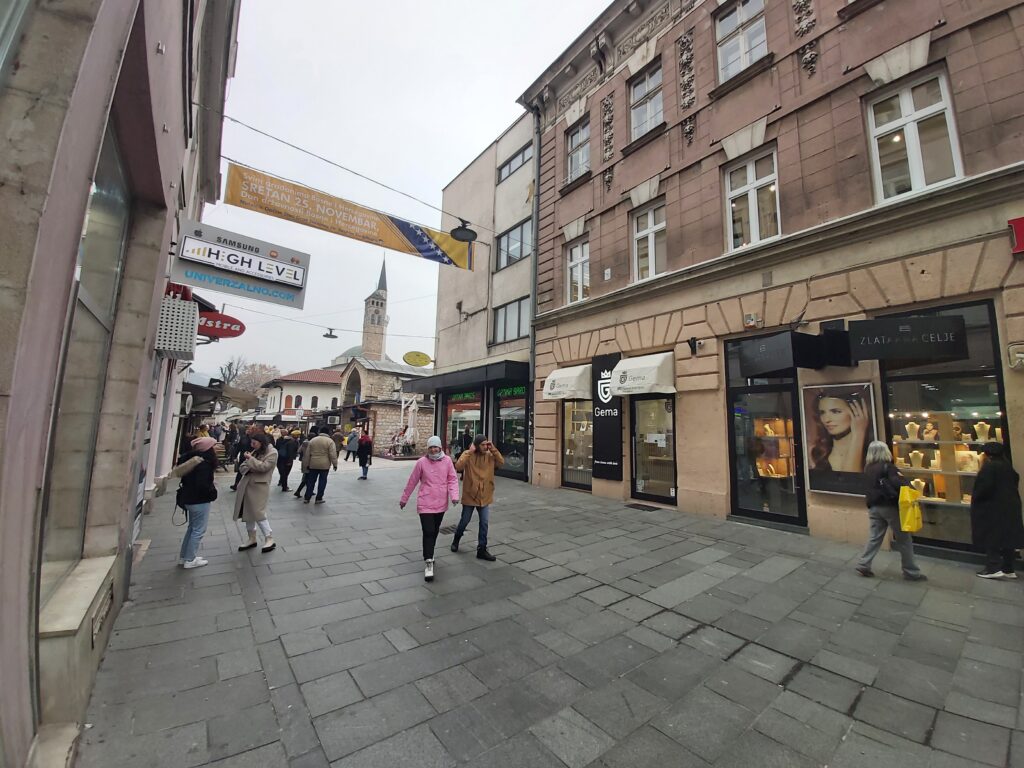
Today, Sarajevo has almost recovered from the war. However, many buildings are still in ruins. However, I will report that the people are resilient. The city is vibrant. If not filled with ancient wonders, the city is filled with a variety of cultures. A line on the pavement marks a transition from Ottoman Empire architecture and the Austro-Hungarian architecture. The differences are celebrated in Sarajevo.
People are friendly. Cafes, restaurants and bars abound. One interesting thing about the Balkans is that, while alcohol is found almost everywhere, no one is pressured to drink. I often saw couples order Cola or tonic water in bars (and by bar, I mean a place that primarily serves alcohol), while others drank beer and shots. The cultural is drink as much alcohol as you like, but don’t get drunk in public. I wonder if it is a cultural accommodation reached between religions that prohibit alcohol and those which don’t.
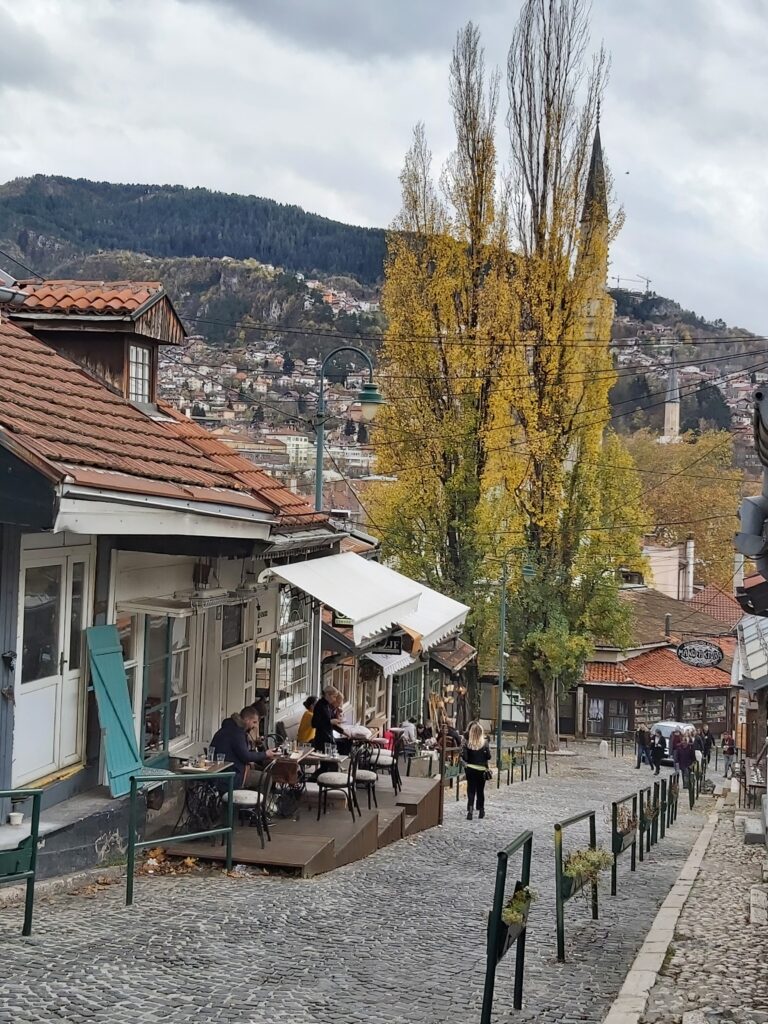
If you’ve been reading my recent posts, you’ll know that Balkan countries share, more a less, a common history. At least until the breakup of Yugoslavia in the early 1990s. Say what you like about Josip Broz Tito, former ruler of Yugoslavia, but he kept everyone in line. You see, under Tito’s iron fist, everyone was forced to get along. But afterwards, not so much. Following his death in 1980, things fell apart politically and ethnically. Politically, Yugoslavia separated into the countries we call the Balkans today. Those countries are not aligned with the region’s ethnic boundaries. If were learned nothing else from the Sykes-Picot agreement, we learned that borders cannot be arbitrarily assigned. People will fight to reconnect with their kin. In BiH, Yugoslavia gave way to a horrific war of ethnic cleansing. The problems that may have started a couple thousand years ago, came to a head.
I’m not going to recount the events here; you can easily find histories of the Bosnian war online. Read them for yourself. Or not. But remember, when you talk in terms of ‘us’ and ‘them,’ when you say ‘they’ don’t belong, when you say ‘they’ have caused all of our problems… well, you don’t have to be much of student of history to know what happens next. In fact, you don’t have to be a student of history at all. Just pick up a newspaper. Or, click on an app…
What happened in BiH was genocide and crimes against humanity. Horrific. Terrible. Many of those responsible were tried, convicted and imprisoned. Many were not.
The people of Sarajevo suffered a siege that lasted nearly 4 years (5 Apr 92 – 29 Feb 96). The forces blockaded the town had the high ground. The people in the town suffered bombs and shells and bullets. If Sarajevo fell, it was thought, other pockets of resistance would also.
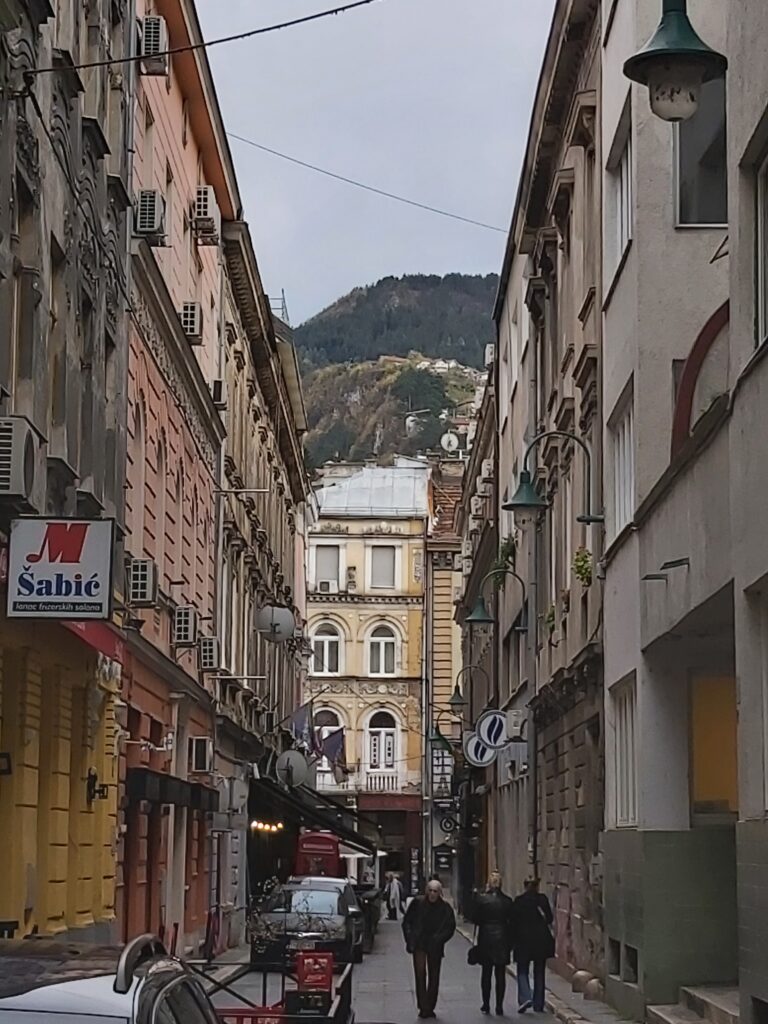
Sarajevo was saved from starvation by a tunnel. In just a few months in 1993, the people of Sarajevo dug an 800-meter tunnel from the city to the airport. Food flown in by the UN were taken through the tunnel into the city. All I can say is thank God for Dayton, Ohio!
Sarajevo, and BiH as a whole, suffers from the lack of public transport common in the Balkans. Tram lines are being torn up across the city. Why? I don’t know. Nationally, trains rarely cross mountains or borders. Private cars, busses and airplanes are the only way to go.
So… the bus ride from Sarajevo to Zagreb, Croatia, is 8+ hours. Not nice.
I took the cowards way out. I broke the bus trip in two! A 5+ hour ride to Banja Luka, and a 3+ hour ride to Zagreb. On different days. I spent 2 nights in the northern city of Banja Luka, known for its hot springs (hence, St. Luke’s Baths or Banja Luka). Banja Luka has been a settlement forever (No, not forever; just from the Paleolithic era), and is now the second largest city in BiH (although only 1/3 the population of Sarajevo). And it is a city in the midst of a building boom. It is a nice place and worth a visit, even if it is just a stopover.
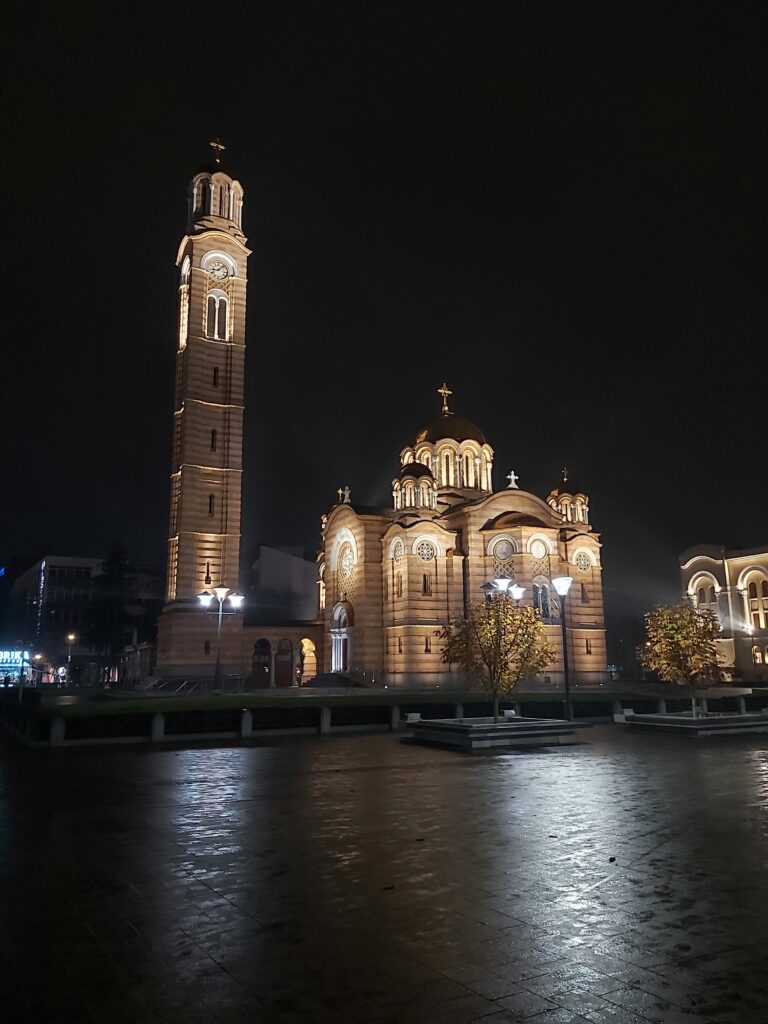
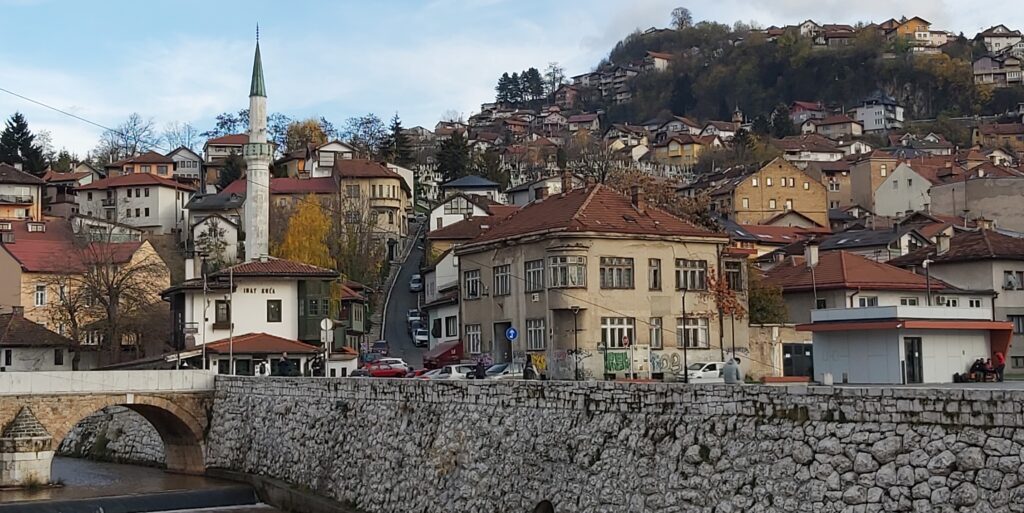
Haven’t commented on your blog in a while, but I am reading them. They really are amazing! And the pics are great. I think I spotted Eric again! (Well, the back of his head.) I’ve even laughed outloud more than once. You’re a great writer…who knew!! You could be Rick Steves when you grow up!! ♡
Well, thank you. Kind of wish you weren’t so surprised by my talent.?. Rick Steves probably has a thing or two to say as well. Saw something decades ago that claimed there were only 42 people in the world, and everyone else looked like one of those 42. Don’t know what side Eric is on…